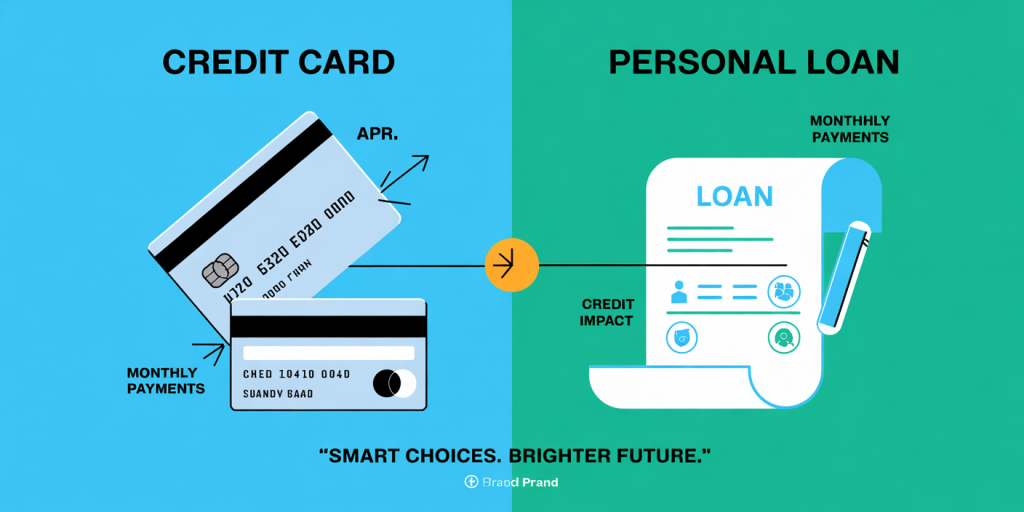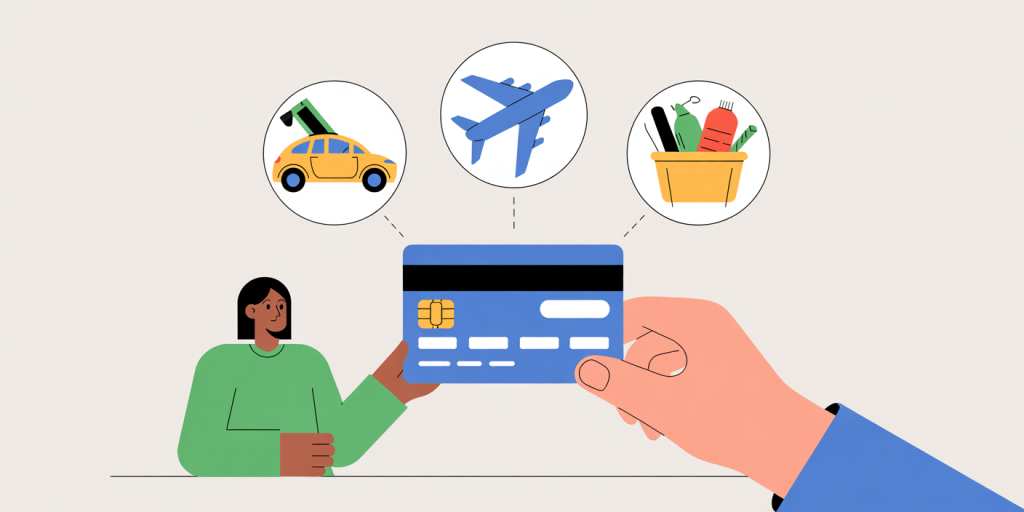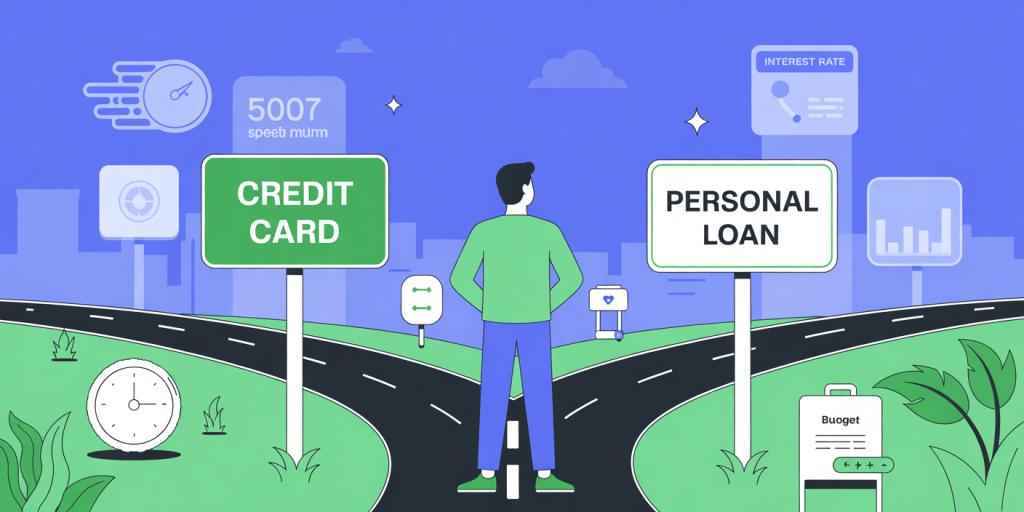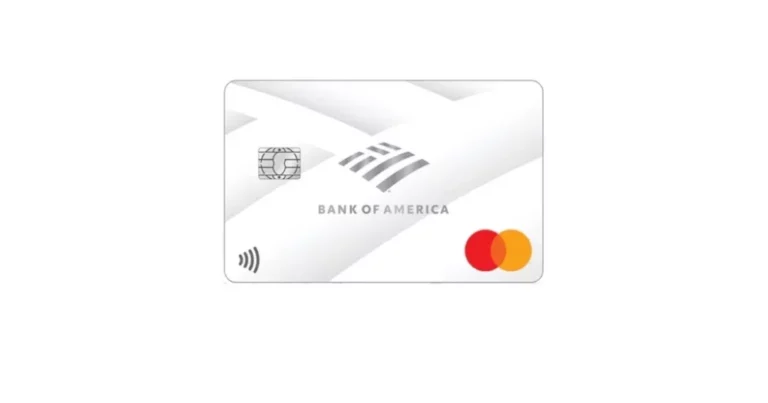Personal Loan vs. Credit Card: Which Should You Use in a Financial Crunch?
Anúncios
When an unexpected expense arises — whether it’s a medical bill, emergency home repair, or job loss — many people face a tough decision: should they use a credit card or apply for a personal loan? Both options offer fast access to funds, but each comes with distinct features, risks, and benefits that can significantly affect your financial health.
This comprehensive guide compares personal loans and credit cards across key areas like interest rates, repayment terms, credit impact, flexibility, and best-use scenarios. By the end, you’ll be able to choose the right tool for your financial emergency with confidence.
Understanding the Basics
Anúncios
A credit card is a revolving line of credit that allows you to borrow money repeatedly up to a set credit limit. You can pay off the balance in full each month or carry it over and pay interest on the remaining amount.
A personal loan is an installment loan where you borrow a fixed amount of money and repay it over a set term (usually 1 to 7 years) in regular monthly payments. Personal loans are generally unsecured, meaning they don’t require collateral.
Anúncios
Speed of Access

Credit Cards:
If you already have a credit card, access is instant. You can swipe or tap your card to cover the expense immediately. If you’re applying for a new card, approval may take a few days to a few weeks.
Personal Loans:
Personal loan approval typically takes longer than using an existing credit card. However, many online lenders offer same-day or next-day funding once approved, especially if you already bank with the lender.
Verdict: If you need money today and already have an open credit card, it’s the fastest option. If you can wait a day or two, a personal loan is worth considering.
Interest Rates
Credit Cards:
Credit card interest rates are typically higher than those of personal loans. In 2025, the average APR for credit cards ranges between 18% and 26%, depending on your credit score.
Personal Loans:
Personal loans usually come with fixed interest rates. As of 2025, APRs for personal loans range from 6% to 20%, depending on your credit profile and lender. Borrowers with excellent credit may qualify for rates under 10%.
Verdict: Personal loans usually offer much lower interest rates than credit cards, especially for borrowers with good to excellent credit.
Repayment Structure
Credit Cards:
Minimum monthly payments are required, but you can carry a balance indefinitely — which means high interest can accumulate quickly if you don’t pay in full.
Personal Loans:
You make fixed monthly payments over a predetermined period. This structured plan ensures that your debt will be fully repaid by the end of the term, making it easier to budget and avoid prolonged debt.
Verdict: If you need discipline and structure, a personal loan offers a clear repayment schedule. Credit cards offer more flexibility but risk long-term debt if not managed carefully.
Loan Amounts
Credit Cards:
Credit limits vary, usually from $500 to $30,000. Limits are based on your income, credit score, and existing debt.
Personal Loans:
Loan amounts range from $1,000 to $100,000, depending on your creditworthiness and the lender. This makes personal loans a better choice for larger expenses, like medical treatments or home renovations.
Verdict: For large expenses, personal loans are more appropriate. Credit cards are better suited for smaller, short-term needs.
Fees and Costs
Credit Cards:
Credit cards may charge annual fees, late fees, over-limit fees, and high interest on cash advances. Some offer 0% introductory APR for a limited time.
Personal Loans:
Most personal loans don’t have annual fees, but some charge origination fees (1%–6% of the loan amount). Prepayment penalties are rare but possible.
Verdict: Credit cards can be more expensive if you carry a balance. However, 0% APR promotions may offer short-term cost advantages if used wisely.
Credit Score Impact
Credit Cards:
Using more than 30% of your available credit can hurt your credit score. Carrying a high balance also negatively impacts your credit utilization ratio.
Personal Loans:
A personal loan doesn’t impact your utilization ratio and can improve your credit mix — a factor in credit scoring models. Making on-time payments helps build a strong credit history.
Verdict: Personal loans can benefit your credit profile more than maxing out a credit card, especially if you repay consistently and on time.
Flexibility and Convenience
Credit Cards:
Once open, a credit card gives you revolving access to funds. You can use it repeatedly without reapplying. They’re ideal for ongoing, unpredictable expenses.
Personal Loans:
Personal loans are one-time disbursements. If you need additional funds, you must apply for another loan.
Verdict: Credit cards offer more flexibility for ongoing or recurring needs. Personal loans are better for single, large expenses.
When to Use a Credit Card

-
You need fast access to funds for a small or medium-sized expense
-
You can repay the balance in full within the billing cycle or before a promotional 0% APR expires
-
You want to earn rewards or cashback on the purchase
-
You need flexibility for recurring or unpredictable costs
Examples:
-
Paying for car repairs under $2,000
-
Booking a last-minute flight and repaying next month
-
Covering a short-term income gap
When to Use a Personal Loan
-
You need to borrow a large amount of money for a one-time expense
-
You want fixed payments and a clear end date
-
You have a strong credit score and qualify for a low interest rate
-
You want to consolidate high-interest credit card debt into one manageable payment
Examples:
-
Covering medical bills of $10,000
-
Financing a home improvement project
-
Consolidating multiple credit card balances
Real-Life Example
David needs $8,000 to cover an emergency dental procedure. His credit card has an 18% APR and an $8,500 limit, while a personal loan from his bank offers 8% APR for a 36-month term with no origination fee.
If he uses his credit card and makes minimum payments, he could pay thousands in interest and take over a decade to pay it off. With the personal loan, he’ll pay around $250 per month and repay the full amount in three years — saving money and reducing stress.
Debt Consolidation: A Common Use of Personal Loans
Many people use personal loans to consolidate credit card debt. This strategy allows you to combine multiple high-interest balances into a single loan with a lower interest rate and fixed payment schedule.
Benefits:
-
Lower overall interest costs
-
Simplified repayment
-
Improved credit utilization
Drawbacks:
-
You may be tempted to rack up new credit card debt
-
Closing old accounts can hurt credit age (unless kept open)
Important Note: Only consolidate if you’re committed to not reusing the paid-off credit cards irresponsibly.
Balance Transfer Credit Cards: A Special Case
Some credit cards offer 0% APR for 12 to 21 months on balance transfers. This can be a smart option for paying off existing debt without interest — but only if you can pay it off before the promotional period ends.
Things to watch:
-
Balance transfer fees (usually 3%–5%)
-
Reverting to high interest rates after the promo period
-
The temptation to add new charges
Comparing Both Options Side-by-Side
| Feature | Credit Card | Personal Loan |
|---|---|---|
| Type of Credit | Revolving | Installment |
| Interest Rate (APR) | 18%–26% avg (variable) | 6%–20% avg (fixed) |
| Loan Amount Range | $500–$30,000 | $1,000–$100,000 |
| Repayment Term | Flexible, minimum payments | Fixed monthly payments |
| Time to Access | Immediate if existing account | 1–3 days for approval and funding |
| Credit Impact | Affects utilization ratio | Improves credit mix |
| Best Use | Short-term or recurring expenses | Large, one-time expenses |
Final Thoughts

When facing a financial crunch, choosing between a credit card and a personal loan depends on your goals, the urgency of the need, and your repayment ability.
Use a credit card if the expense is small and you can pay it off quickly — ideally within a 0% APR period. Use a personal loan if you need a larger sum, want a predictable payment plan, and can qualify for a favorable interest rate.
Neither option is inherently better. Each serves a specific purpose. The key is to be informed, compare terms carefully, and choose the one that supports your financial recovery — not adds to the burden.

Post Comment